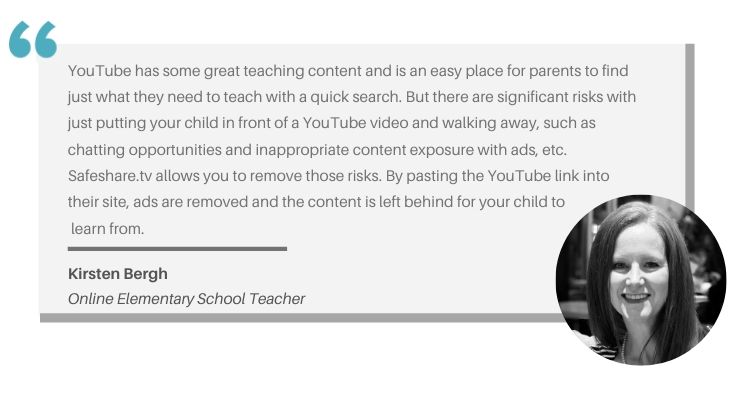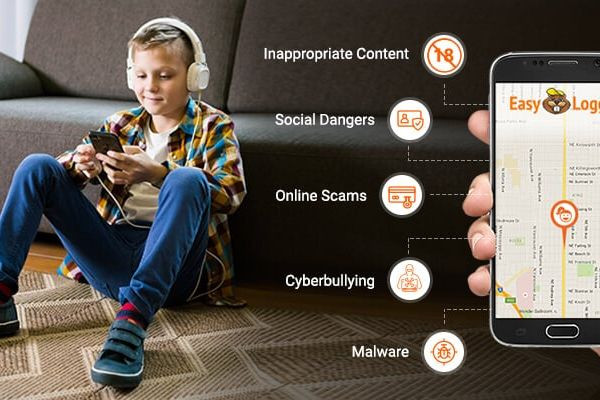There are a number of potential dangers in cyberspace, but these are the top online security risks that most kids face.
1. Cyberbullying: More than 36% of kids age 12–17 have been cyberbullied at some point in their life, and nearly 15% have bullied someone else online. Cyberbullying is any aggressive, threatening, or mean-spirited activity conducted via electronic communication (email, social media posts, text messages, etc.). Girls are more likely to be the victims of cyberbullying, and more boys admit to bullying others online.¹
2. Online predators: Adults who use the internet to entice children for sexual or other types of abusive exploitation are considered online predators. Child victims can be as young as 1 or as old as 17. When it comes to online enticement, girls make up the majority (78%) of child victims—while the majority (82%) of online predators are male. And 98% of online predators have never met their child targets in real life.²
3. Exposure to inappropriate content: Inappropriate content is one of the most common online threats that kids encounter. Everything from vulgar language and hate speech to graphically violent or sexual images can have a harmful effect on an impressionable child. Over 55% of tweens (kids age 10–12) have been exposed to violent content on the internet, and nearly 60% have come across sexually explicit words or images.³
NOTE: For the purposes of this guide, we’re focusing on the earliest prevention possible. While these internet safety tips for kids and parents can be applicable to anyone, we’ve selected steps to help protect children from ages 5 through 12.
Parental control apps like Bark help you monitor content across several platforms, manage screen time, filter inappropriate websites and set location alerts.
How to keep your kids safe during online learning
Whether you and your kiddos are internet pros or getting online for the first time, we’ve got the tips you need to navigate learning online safely.
Tips for safe online learning
Just because your child goes online for school, it doesn’t mean there still aren’t potential dangers lurking. These best practices will minimize your child’s exposure to online risks no matter what platform or software their school is using.
1. Make sure websites are secure
You can instantly tell if any website is safe by looking for one letter: “s.” Every website address starts with the letters “http,” but you know a site is secure when you see “https.” That means the website itself is taking measures to keep users and their information secure while they use the site.
If you’re directed to any websites for school or entertainment that don’t have that extra “s” at the beginning of the address, steer clear.

2. Guard personal information
This can get tricky when your child needs to be identified for schoolwork or classroom discussions, but personal details need to be guarded closely.
Chances are, your child probably already has a student identification number. Those kinds of identifiers are a great way to protect personal details from leaking on the internet.
None of the following information should be used to identify your child in class, on a list of posted grades, or in an online discussion.
- Full first and last name
- Social security number
- Birthdate
- Address
- Phone number
- Photograph
Your little one should also have a secure username and password to log into courses, lectures, and assignments.
3. Set up parental controls
You don’t have to purchase parental control software to protect your child during online learning. There are already a lot of helpful tools built into your device hardware, software, and internet browser.
Find tutorials here to help you maximize built-in privacy settings and content blockers.
If you want the extra reassurance of parental control software, we tested a bunch of them and picked our favorites. Almost every brand we recommend has a free version available, so you can probably upgrade from built-in parental controls without reaching for your wallet.
4. Keep everything updated
It seems too simple to be so effective, but one of the best ways to keep kids safe online is to make sure that all devices, software, and firmware are up to date.
Updates can seem like a pain, but one of the biggest reasons companies come out with new versions is to deploy security patches that address the most recent and innovative threats out there.
Plus, an outdated operating system or old version of software can render your parental controls and privacy settings useless.







